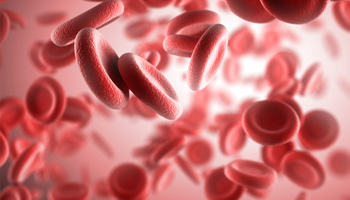HOW CAN WE HELP YOU? Call 1-800-TRY-CHOP
In This Section
CHOP Scientists Advance Hemophilia Research With Bayer Awards
 For children with hemophilia, every new research advance is a step toward a life filled with more activity, freedom, and adventure. The genetic condition, which affects roughly one in 5,000 births, causes children to bleed and bruise more easily than others – meaning that a simple cut, scrape, or small surgery can result in uncontrollable and excessive bleeding. While hemophilia is a lifelong condition, breakthroughs in the laboratory are driving novel treatments, and thanks to recently announced grants from the Bayer Hemophilia Awards Program (BHAP), scientists at Children’s Hospital of Philadelphia will be able to continue conducting even more investigations.
For children with hemophilia, every new research advance is a step toward a life filled with more activity, freedom, and adventure. The genetic condition, which affects roughly one in 5,000 births, causes children to bleed and bruise more easily than others – meaning that a simple cut, scrape, or small surgery can result in uncontrollable and excessive bleeding. While hemophilia is a lifelong condition, breakthroughs in the laboratory are driving novel treatments, and thanks to recently announced grants from the Bayer Hemophilia Awards Program (BHAP), scientists at Children’s Hospital of Philadelphia will be able to continue conducting even more investigations.
This year, the BHAP program, whose aim is to support basic and clinical science of the disorder, awarded three out of its four U.S. grants to researchers at CHOP. We connected with the three BHAP recipients to learn what they plan to do with their new grants. Congratulations to Paris Margaritis, DPhil, researcher; Bhavya Doshi, MD, hematologist-oncologist; and Manjunath Goolyam Basavaraj, PhD, postdoctoral fellow — all of the division of Hematology!
Manjunath Goolyam Basavaraj: Discovering New Strategies to Improve Treatment
 Dr. Basavaraj will focus on designing better treatment strategies for hemophilia-A, the most common form of the condition. Children with hemophilia-A have deficiencies in factor VIII, a protein responsible for blood clotting. Without proper clotting, children can experience excessive and sometimes fatal bleeding. Currently, clinicians treat the deficiency with repeated infusions of a replacement factor called recombinant factor VIII, or rFVIII; however, this recombinant factor is very expensive and difficult to produce.
Dr. Basavaraj will focus on designing better treatment strategies for hemophilia-A, the most common form of the condition. Children with hemophilia-A have deficiencies in factor VIII, a protein responsible for blood clotting. Without proper clotting, children can experience excessive and sometimes fatal bleeding. Currently, clinicians treat the deficiency with repeated infusions of a replacement factor called recombinant factor VIII, or rFVIII; however, this recombinant factor is very expensive and difficult to produce.
“Worldwide, only 25 percent of patients receive adequate treatment,” Dr. Basavaraj said. With the support of his 2017–2018 Early Career Investigator award from BHAP, Dr. Basavaraj will investigate novel strategies to improve the activity and stability of FVIIIa cofactor and, by doing so successfully, develop a new class of rFVIII molecules. These would have increased cofactor activity, greater molecular stability, and prolonged circulating half-life and efficacy.
“This will potentially reduce the dose, treatment cost, and frequency of infusions patients will need to restore normal blood clotting,” Dr. Basavaraj said.
Bhavya Doshi: Reducing the Development of FVIII inhibitors
 A major complication with treating hemophilia-A through rFVIII is that 20 to 30 percent of patients with severe forms of the condition develop “inhibitors” that work against the protein – rendering it ineffective. The presence of these inhibitors, also called antibodies, can thus increase a child’s morbidity and mortality. With his BHAP grant, Dr. Doshi will investigate ways to restore the ability to use rFVIII in patients and address the need for alternative therapies to more effectively treat inhibitors.
A major complication with treating hemophilia-A through rFVIII is that 20 to 30 percent of patients with severe forms of the condition develop “inhibitors” that work against the protein – rendering it ineffective. The presence of these inhibitors, also called antibodies, can thus increase a child’s morbidity and mortality. With his BHAP grant, Dr. Doshi will investigate ways to restore the ability to use rFVIII in patients and address the need for alternative therapies to more effectively treat inhibitors.
“The economic impact of inhibitors is astounding, with therapy costing approximately a million dollars a year per patient,” Dr. Doshi said. Although researchers have identified some risk factors that can help clinicians guess whether a patient might develop inhibitors (such as family history or severity of the disease), Dr. Doshi added, we simply cannot predict which patients will certainly develop them, and which won’t.
Through the grant, Dr. Doshi will be able to build on previous discoveries from his lab regarding a novel B cell survival cytokine, an immune signaling protein, that appears higher in patients with inhibitors. His project will target therapy to this cytokine in animal models, in an attempt to overcome the immune system’s response to rFVIII. In addition, he will follow the trail of previous evidence that suggests specific mutations can lead to higher levels of this cytokine and predispose a patient to autoimmune disease. His work will analyze patient samples to see whether hemophilia patients with such mutations are more prone to developing inhibitors.
“The Bayer Fellowship Project Award provides funding to do this exciting work, which may significantly advance the care of hemophilia by identifying both a new therapy and predictive biomarker for inhibitors,” Dr. Doshi said. “In addition, the award provides support for me to obtain specialized clinical training in caring for people with hemophilia through mentors at CHOP and UPenn.”
Paris Margaritis, DPhil: Expanding our Understanding of How FVIIa Works in Hemophilia
 One treatment for a hemophilia patient’s excessive bleeding includes the administration of large amounts of Factor VIIa (FVIIa), an activated form of a clotting factor that patients already have, and which normally circulates in small amounts.
One treatment for a hemophilia patient’s excessive bleeding includes the administration of large amounts of Factor VIIa (FVIIa), an activated form of a clotting factor that patients already have, and which normally circulates in small amounts.
“Although FVIIa is very short lived in blood, paradoxically, its hemostatic effects in hemophilia appear to persist for significant amounts of time,” Dr. Margaritis said.
Dr. Margaritis has received previous BHAP funding twice and, with the new grant, will continue an ongoing investigation to explain how FVIIa works inside the body. Potentially, FVIIa may “pool” outside of the blood vessels where it can be used when an injury occurs. Previous research has shown that a vessel wall protein (endothelial protein C receptor, or EPCR) does facilitate the hemostatic function of FVIIa and its transfer from the blood to the extravascular space. According to Dr. Margaritis, a hypothesis for the extended hemostatic effects of FVIIa is that the protein ECPR affects clotting directly on the vessel wall when FVIIa is infused in patients and indirectly by enabling the infused FVIIa to transfer extravascularly, where it can be stored and used during an injury.
“[The] Bayer Hemophilia Awards Program grant aims to delineate the hemostatic contribution of the proposed intra- and extravascular FVIIa pools in vivo,” Dr. Margaritis said. “Overall, the results will increase our understanding on how FVIIa works in hemophilia, potentially allowing for the rational design of novel FVIIa molecules for the treatment for bleeding.”